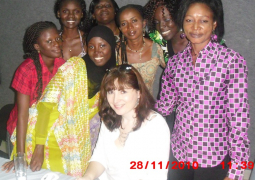FGM is defined by the WHO as “all procedures that involve partial or total removal of the external female genitalia, or other injury to the female genital organs for non-medical reasons.” It is recognised as a violation of the human rights of women and girls. In December 2012, the United Nations general assembly unanimously voted to work for the elimination of FGM throughout the world.
“It reflects deep-rooted inequality between the sexes, and constitutes an extreme form of discrimination against women,” says the WHO. “It is nearly always carried out on minors and is a violation of the rights of children. The practice also violates a person’s rights to health, security and physical integrity, the right to be free from torture and cruel, inhuman or degrading treatment, and the right to life when the procedure results in death.”
Just how many girls and women have been subjected to FGM is hard to know. The data is not easy to collect for obvious reasons. Last year Unicef published what it described as the most comprehensive compilation of data and analysis on the prevalence of FGM in Africa and the Middle East. Using more than 70 national surveys, produced over a period of more than 20 years, the report focused on the 29 countries where the practice is most common.
In eight countries, almost all young girls are cut. In Somalia, the prevalence is 98%, in Guinea 96%, in Djibouti 93% and in Egypt, in spite of its partly westernised image, 91%. In Eritrea and Mali the figure is 89% and a prevalence of 88% was reported in both Sierra Leone and Sudan.
In some countries, FGM has been medicalised. In Egypt, most of the cutting is undertaken by trained healthcare professionals, which reduces the risk of infection, pain and bleeding, but serves to make the procedure appear acceptable within the country, in the face of the UN resolution.
But in countries where more than one survey has been done, it does appear that the number of girls who have been cut is slowly reducing. The UN population fund and Unicef, the UN children’s fund, say 8,000 communities in Africa have agreed to abandon the traditional practice. They have been involved in supporting awareness of the health and human rights issues, in negotiations and discussions with the leaders of the communities and in suggesting alternative rituals. Where this process is successful, the social status and marriage prospects of young girls are not damaged as they could be if their families acted alone.
In some countries, FGM is a rite of passage, which marks a girl’s transition to womanhood and her readiness to marry. It is also motivated by beliefs about sexual behaviour and virginity and chastity.
Apart from the pain and distress involved in the procedure at the time, there can be long-term health consequences, even sometimes involving infertility.
Guest Editorial: the Guardian
“We have to stop Female genital mutilation.”
Ananymous



